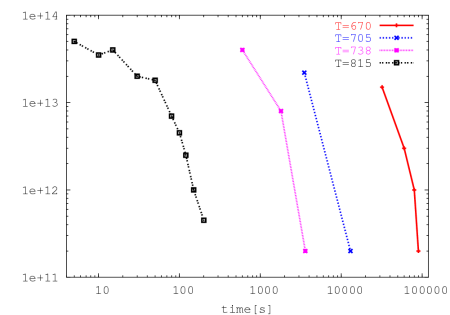|
|
|
|
Previous: 5.6.2.3 Results Up: 5.6 Examples Next: 5.6.3.1 The Model for Cluster Formation and Dissolution |
The formation and dissolution of Silicon self-interstitial clusters is attributable to transient enhanced diffusion (TED). TED is the fast redistribution of impurities that takes place in the very first thermal step right after implantation. An accurate simulation of transient enhanced diffusion plays an important role in the manufacturing process of sub micron semiconductor devices [109,110]. A well calibrated model is thereby a prerequisite for an accurate simulation of the transient enhanced diffusion.
In [111] the source for the Silicon self-interstitials
was identified to be ![]() defects which are rod like clusters of
interstitials. Counting the number of interstitials is a complicated
task. Transmission electron microscopes are used to measure the number of
interstitials in each defect. In this application a diffusion model of the
TSUPREM-IV simulator is calibrated to a set of measurements
published in [112]. The measurements were carried out a temperatures
defects which are rod like clusters of
interstitials. Counting the number of interstitials is a complicated
task. Transmission electron microscopes are used to measure the number of
interstitials in each defect. In this application a diffusion model of the
TSUPREM-IV simulator is calibrated to a set of measurements
published in [112]. The measurements were carried out a temperatures
![]() ,
,
![]() ,
,
![]() , and
, and
![]() . Fig. 5.27 depicts the measured curves at the
different temperatures.
. Fig. 5.27 depicts the measured curves at the
different temperatures.
 |